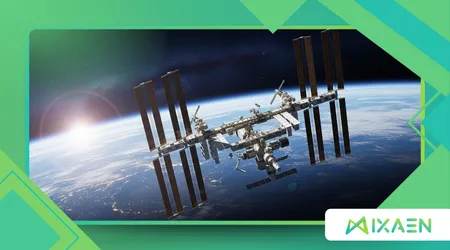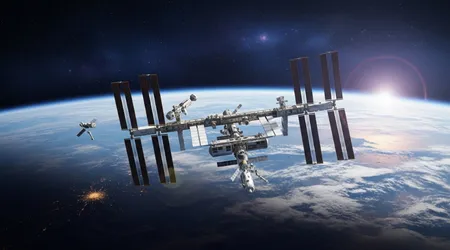Why the ISS Is Still One of the Most Important Experiments in Human History

The ISS Is Still One of the Most Important Experiments in Human History, not simply a marvel of engineering, but a foundational pillar for our species’ cosmic future.
Anúncios
As the International Space Station (ISS) approaches its planned 2030 deorbit, a new wave of discussion questions its immense value relative to its cost.
Such financial scrutiny often misses the point entirely. The station’s real legacy lies in its unparalleled data on human adaptation and technological resilience outside Earth’s protective embrace.
Forget the short-term cost-benefit analysis of orbiting infrastructure; the ISS provides insights utterly unattainable elsewhere.
It is the proving ground, the essential bridge between short spaceflights and the sustained, deep-space missions to the Moon and Mars now actively being planned.
Anúncios
We must recognize the ISS for the indispensable laboratory that it remains, an ongoing, transformative project informing every aspect of tomorrow’s exploration.
Why Is the ISS The Ultimate Training Ground for Deep Space Travel?
Sustaining human life outside Earth’s atmosphere for months or years is a monumental challenge.
The ISS has been continuously inhabited since November 2000, providing an unprecedented, uninterrupted stream of physiological data critical for future expeditions.
No Mars mission is feasible without the operational blueprint created in low-Earth orbit.
How Do Astronaut Health Studies Advance Our Journey to Mars?
Microgravity’s insidious effects on the human body, including bone density loss and muscle atrophy, demand countermeasures.
The ISS serves as the only place to test the efficacy of these extreme fitness regimes and pharmaceutical interventions over multi-month durations. Without this research, astronauts arriving on Mars would be too frail to function effectively.
Scientists utilize the ISS to study ocular health changes, fluid shifts, and radiation exposure unique to the orbital environment.
This research drives the development of specialized protective equipment and medical protocols for the long transit to another planet. It directly answers the question: Can a human survive the journey?
Researchers gain invaluable data on the psychological effects of long-term confinement and isolation, crucial factors for a multi-year trip far from Earth.
The crew’s interaction dynamics inform crew selection and training programs for future interplanetary teams.
++ The Role of Espionage Satellites in the Early Space Age
What Technological Resilience Has The ISS Proved?
The station is a self-contained, closed-loop ecosystem, a fundamental requirement for any successful Mars colony.
Systems for recycling water, purifying air, and generating oxygen have been refined and proven reliable over decades in orbit.
These are the life-support blueprints for the Moon and Mars outposts. The ISS also tests advanced robotics and autonomous maintenance systems.
Astronauts, for example, have used systems to remotely operate compact robotic surgeons, demonstrating high-precision capabilities essential for medical emergencies on distant missions.
This remote operation capability is a core technological necessity for future self-sustaining bases.

What Groundbreaking Discoveries Have Originated in Orbit?
The microgravity environment is a powerful scientific tool, enabling research impossible to replicate on Earth.
This unique lab has spurred breakthroughs across medicine, materials science, and fundamental physics.
The sheer volume of high-impact research solidifies that the ISS Is Still One of the Most Important Experiments in Human History.
Also read: Could We Have Gone to Mars Instead of the Moon in the 1960s?
How Does Microgravity Revolutionize Medical Research and Drug Development?
Microgravity allows protein crystals to grow larger and more perfectly structured than on Earth. Scientists analyze these perfect crystals to understand complex disease mechanisms, accelerating the development of targeted drugs and vaccines.
This has a direct, beneficial impact on human health globally. Researchers successfully used the microgravity environment to 3D bioprint live human heart tissue in 2024.
This ability to create complex biological structures without the gravitational stress of settling is a massive leap toward creating artificial organs for transplantation and personalized medicine testing on Earth.
An NIH-funded project, facilitated by the ISS, resulted in a patent being filed for a muscle tissue chip system.
This micro-engineered model allows for the precise study of muscle loss, offering new therapeutic avenues for the elderly and those suffering from degenerative conditions on our planet.
Read more: What’s Artemis II’s Orion ‘Integrity’ Spacecraft?
In What Ways Does Space Research Benefit Terrestrial Industry?
The space station is a vital platform for commercial materials science. Research conducted there has led to the development of better alloys, fire-resistant materials, and more efficient solar cell technology.
Commercial entities increasingly utilize the orbital environment to test product viability. According to a 2025 analysis of space-based research, peer-reviewed papers originating from the ISS receive, on average, 41% more citations than similar Earth-based papers.
This measurable difference in scientific influence highlights the unique and high-value nature of the discoveries made in orbit. Is there any clearer demonstration of the station’s profound impact?
Why Is International Collaboration The ISS’s Enduring Human Legacy?
The ISS represents an unprecedented geopolitical triumph. Built by five space agencies from 15 nations, it forces cooperation, communication, and shared purpose among global powers, including former Cold War adversaries.
This collaborative model is perhaps the station’s most significant, yet intangible, contribution.
How Does the ISS Serve as a Model for Global Diplomacy?
Astronauts and cosmonauts from diverse cultural backgrounds live and work in confined, high-stress conditions for extended periods.
The necessity of flawless communication and mutual reliance creates a practical, working model of international diplomacy far removed from terrestrial politics.
It’s an analogy: the ISS is the world’s most effective, expensive, and successful peace treaty, written in orbital mechanics and module interfaces.
This operational requirement for harmony transcends global conflicts, maintaining a constant flow of logistics and shared scientific goals.
The joint training, mission planning, and execution have established protocols that can inform complex, large-scale international endeavors on Earth. We are proving humanity can work together when the stakes are high.
What Does The Commercial Transition Tell Us About The Station’s Value?
As the ISS approaches deorbit in 2030, commercial entities are actively developing successor space stations, backed by NASA funding.
This transition confirms the economic viability and continued necessity of a low-Earth orbit research platform, a direct result of the groundwork the ISS laid.
The ISS Is Still One of the Most Important Experiments in Human History because it catalyzed the commercial space economy.
Private companies are now building modules and preparing to assume the research and habitation mantle.
The station’s quarter-century of operation successfully lowered the technical and operational barriers for private spaceflight, paving the way for a more accessible and commercially driven orbital future.
The Core Research Pillars of the ISS
The sheer breadth of research conducted on the ISS spans every critical scientific domain, contributing to both life on Earth and future exploration.
| Research Category | Primary Focus in Microgravity | Key Outcome/Application |
| Human Physiology | Bone density loss, fluid shifts, radiation effects | Countermeasures for Mars missions, osteoporosis treatment on Earth |
| Materials Science | Alloy crystallization, combustion processes, fluid dynamics | Improved materials strength, cleaner engine design, advanced fiber optics |
| Fundamental Physics | Atomic physics, quantum communication, dark matter detection | Testing universal constants, next-generation computing |
| Biotechnology | Protein crystal growth, tissue engineering, cell culture viability | Targeted drug design, bioprinting of human organs/tissues |
Conclusion: Securing the Legacy
The ISS Is Still One of the Most Important Experiments in Human History a legacy cemented not by the structure itself, but by the two decades of hard-won knowledge it provided.
It taught us how to survive off-world, offered a unique platform for medical and material breakthroughs, and demonstrated that international rivals can achieve something extraordinary together.
As we look forward to the Moon and Mars, every design element, every medical protocol, and every step of international coordination carries the fingerprint of the orbiting laboratory.
The station is a priceless inheritance. Share your thoughts on the ISS’s greatest contribution to science in the comments below!
Frequently Asked Questions (FAQ)
When is the International Space Station scheduled to be deorbited?
The International Space Station is currently scheduled for controlled deorbit and disposal in the Pacific Ocean’s “spacecraft cemetery” in 2030, after which private commercial stations are expected to take over LEO research.
How many nations collaborated on the construction of the ISS?
The ISS program is a partnership between five participating space agencies: NASA (USA), Roscosmos (Russia), JAXA (Japan), ESA (Europe), and CSA (Canada), representing the contributions of 15 different countries.
Will there be a gap between the ISS retirement and the launch of new commercial stations?
While NASA is funding the development of commercial orbital platforms, there is an acknowledged risk of a brief gap in continuous human presence in Low Earth Orbit (LEO) after the ISS is decommissioned in 2030.
How does ISS research directly help people on Earth right now?
ISS research has directly contributed to advancements in water purification systems, robotic surgery techniques, and better understanding of protein crystallization, which aids in developing drugs for diseases like muscular dystrophy and cancer.
